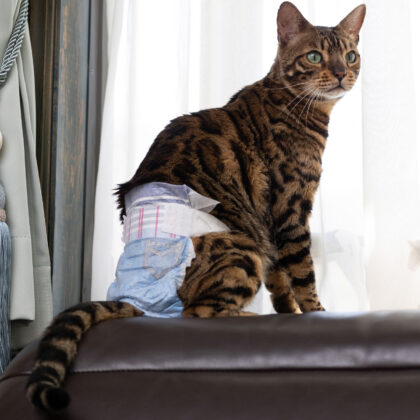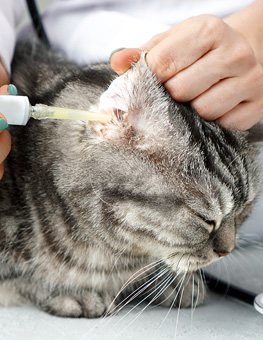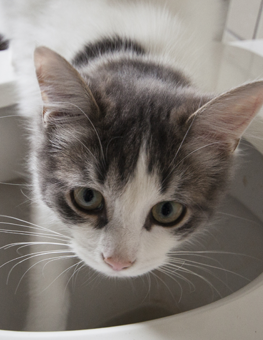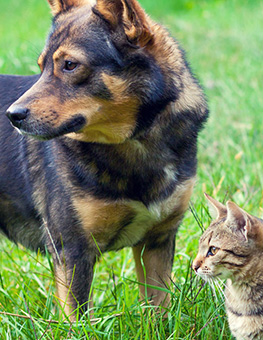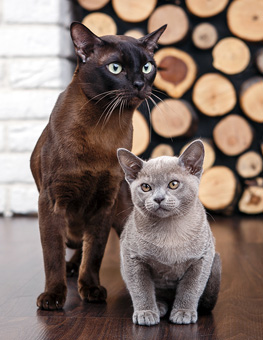Your Cat's Body Language
Cats communicate with humans and each other in many unique ways.
The wild ancestor of the housecat was a solitary creature. Unlike dogs or horses, they were not pack or herd animals and preferred to hunt alone. Through many years of domestication, the cat has learned to live with both humans and other animals. This adaptation has resulted in a number of breed- and species-oriented behaviors.
Breed behaviors
Some breeds are vocal, active and intensely interested in all that goes on in their domain. The Siamese, Abyssinian, Cornish Rex, and Japanese Bobtail are good examples of these. Persians, Scottish Folds, American Shorthairs, and British Shorthairs, on the other hand, are quiet, calm, and not very adventurous.
Some characteristics specifically associated with cats:
- Hunter instincts. In the realm of normal behavior, cats are true carnivores and never lose their hunting instinct. Since they do not need to catch their dinner, they have turned this hunting instinct into a form of playing.
- Hierarchical roles. Cats have also established a social hierarchy ruled by one alpha cat. Once established, the subordinate cats will acquiesce to the top cat’s terms. This holds true in multi-cat households as well as in cat colonies.
- Gender traits. Outside of a home, tomcats will normally be evasive of other males and will mark their territories with urine spraying if they are left unaltered. Female cats typically will interact readily, sometimes groom each other, and share nursery duties.
Communicating with sound
Inside the home and out, cats interact in a variety of ways. Their voices are finely-tuned instruments of communication.
- Purring is the cat’s most common voice message and is a clear sign of contentment.
- High-pitched, high-intensity sounds are the calling card of a cat in distress. Cats in pain or females during the mating ritual will make these sounds.
- Growling, wailing, hissing, and the "spit" sounds are all distress calls that cats may use in fighting.
- Vowel sounds create a sense of urgency heard as begging, complaint, and bewilderment. These are all variations on the traditional "meow."
Body language
Your cat’s body language and facial expressions easily denote her mood:
- Laid-back and happy. Body is in a relaxed level position, pupils will be normal for the prevailing light, ears carried normally.
- Angry. The ears will roll back and the pupils of the eyes become perturbed little slits. Some angry cats will arch their body or walk very erect as if on tiptoe.
- Frightened. The ears will lay flat and the pupils of the eyes are dilated. The body assumes a crouched position.
- Hunting. The body will be in a semi-crouched position with ears thrust forward and the eyes will be very intense.
- Ecstasy. This usually comes from being loved and petted. The eyes are half-closed and ears are in their normal position with the body relaxed.
The importance of smell
The most common way of communicating by smell is through urine marking, anal secretions and skin secretions.
- Unaltered males and even females in season will spray to mark the perimeters of their domain and announce sexual proclivity.
- Cats that circle around each other are actually trying to get a scent from the anal secretions to determine whether that feline is friend or foe.
- Cats transfer their smell to people by means of glandular secretions from the facial area or olfactory glands in the tail when they rub against your legs.





